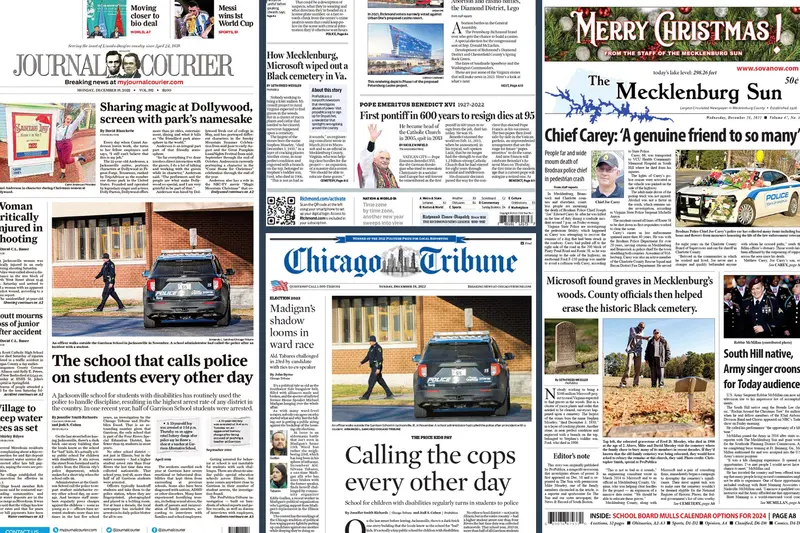Everything about News Articles
Table of ContentsThe Definitive Guide to News ArticlesThe Ultimate Guide To News ArticlesThe smart Trick of News Articles That Nobody is DiscussingThe Buzz on News ArticlesNews Articles for Beginners
Great expertise of different subjects gives pupils a competitive side over their peers. Even though electronic and social networks are readily easily accessible, we ought to not neglect exactly how essential it is to check out the papers. Parents need to attempt and instill the routine of checking out a paper as an everyday routine to continue the heritage of the revered print tool.Information tales additionally have at the very least one of the following important qualities family member to the desired target market: closeness, prestige, timeliness, human passion, peculiarity, or repercussion.
Within these limitations, news stories likewise aim to be extensive. Nevertheless, other elements are involved, some stylistic and some originated from the media form. Amongst the bigger and a lot more revered newspapers, fairness and equilibrium is a significant consider presenting information. Discourse is normally confined to a different area, though each paper may have a various overall angle.
Papers with a worldwide target market, for instance, tend to utilize a more official style of creating. The specific choices made by a news outlet's editor or editorial board are typically gathered in a design guide; common design overviews include the and the US Information Design Book. The major goals of information writing can be summarized by the ABCs of journalism: precision, brevity, and clarity.
The Buzz on News Articles
As a guideline, journalists will not make use of a lengthy word when a short one will do. Information authors try to avoid making use of the exact same word a lot more than once in a paragraph (sometimes called an "resemble" or "word mirror").
Headings in some cases omit the subject (e.g., "Jumps From Boat, Catches in Wheel") or verb (e.g., "Feline female lucky"). A subhead (likewise subhed, sub-headline, subheading, caption, deck or dek) can be either a subservient title under the main heading, or the heading of a subsection of the short article. It is a heading that precedes the major message, or a group of paragraphs of the major text.
of a short article subject, informant, or interviewee), it is described as a drawn quotation or pull quote. Added signboards of any one of these kinds might show up later in the write-up (specifically on succeeding web pages) to entice further reading. Journalistic web sites sometimes make use of animation techniques to exchange one signboard for another (e.g.
Some Known Details About News Articles
Such signboards are likewise used as tips to the post in other areas of the magazine or site, or as advertisements for the item in various other publication or websites. Press release of the Swiss federal government. Typical structure with title, lead paragraph (recap in strong), other paragraphs (details) and call info.

Example of a hard-lead paragraph NASA is proposing one more space job. The spending plan demands approximately $10 billion for the job.
The NASA news came as the company asked for $10 billion of appropriations for the task. An "off-lead" is the 2nd most important front web page information of the day. The off-lead appears either in the leading left corner, or straight below the lead on the right. To "hide the lead" is to start the post with background details or details of second importance to the visitors, compeling them to find out more deeply into a write-up than they need to need to in order to uncover the essential factors.
About News Articles
Common usage is that or 2 sentences each develop their own paragraph. Reporters generally describe the organization or framework of a newspaper article as an inverted pyramid. Get the facts The necessary and most intriguing components of a tale are put at the beginning, with supporting information adhering to in order of lessening relevance.
It permits individuals to check out a topic to only the depth that their inquisitiveness takes them, and without the charge of details or nuances that they could take into consideration unnecessary, however still making that information available to more interested viewers. The upside down pyramid structure also makes it possible for write-ups to be trimmed to any approximate size during format, to suit the area readily available.
Some authors start their stories with the "1-2-3 lead", yet there are several type of lead available. This layout inevitably starts with a "5 Ws" opening paragraph (as defined over), followed by an indirect quote that offers to support a significant aspect of the first paragraph, and after that a direct quote to sustain the indirect quote. [] A twist can refer to multiple points: The last tale current broadcast; a "happy" tale to end the show.
Longer write-ups, such as magazine cover write-ups and the pieces that lead the within her latest blog sections of a paper, are known as. Attribute tales differ from straight news in numerous ways. Foremost is the lack of a straight-news lead, the majority of the time. Rather of offering the significance of a tale up front, function writers may attempt to tempt readers in.
The Only Guide for News Articles
The journalist usually information communications with meeting topics, making the item more personal. A feature's first paragraphs typically associate a fascinating minute or occasion, as in an "unscientific lead". From the details of a person or episode, its sight rapidly broadens to generalities regarding the tale's topic. The area that signifies what an attribute has to do with is called the or signboard.

The Editor's Tool kit: A Referral Guide for Beginners and Professionals (2001) Allan M. Siegal and William G. Connolly. The New York City Times Handbook of Style and Use: The click Authorities Design Overview Utilized by the Writers and Editors of the Globe's Many Reliable Paper (2002) M. L. Stein, Susan Paterno, and R.